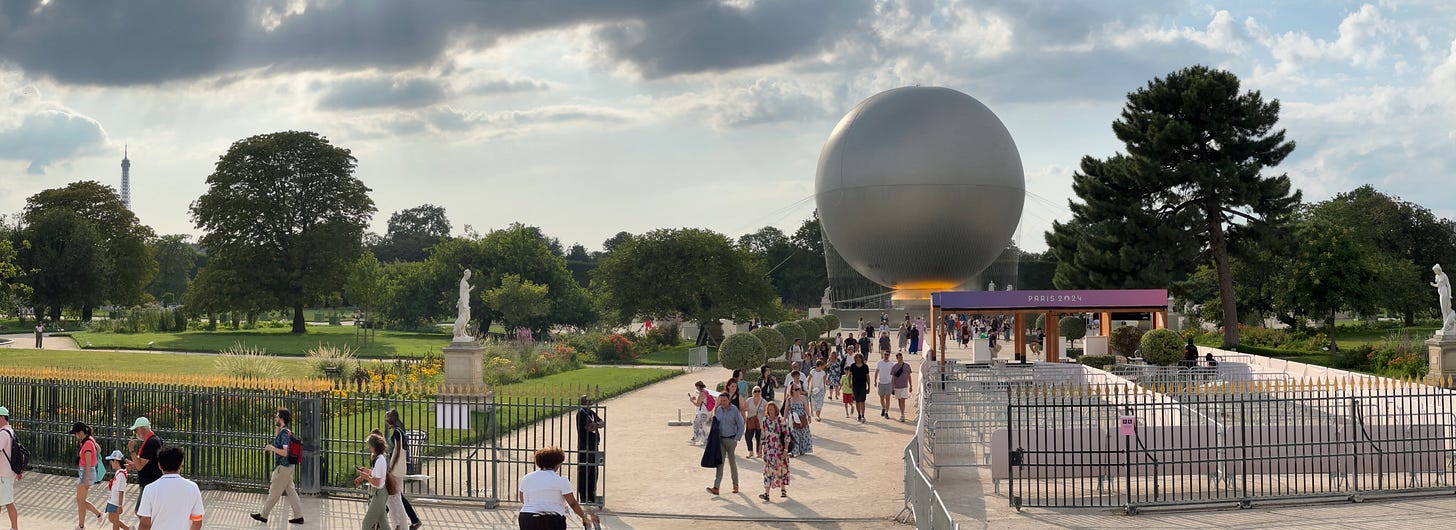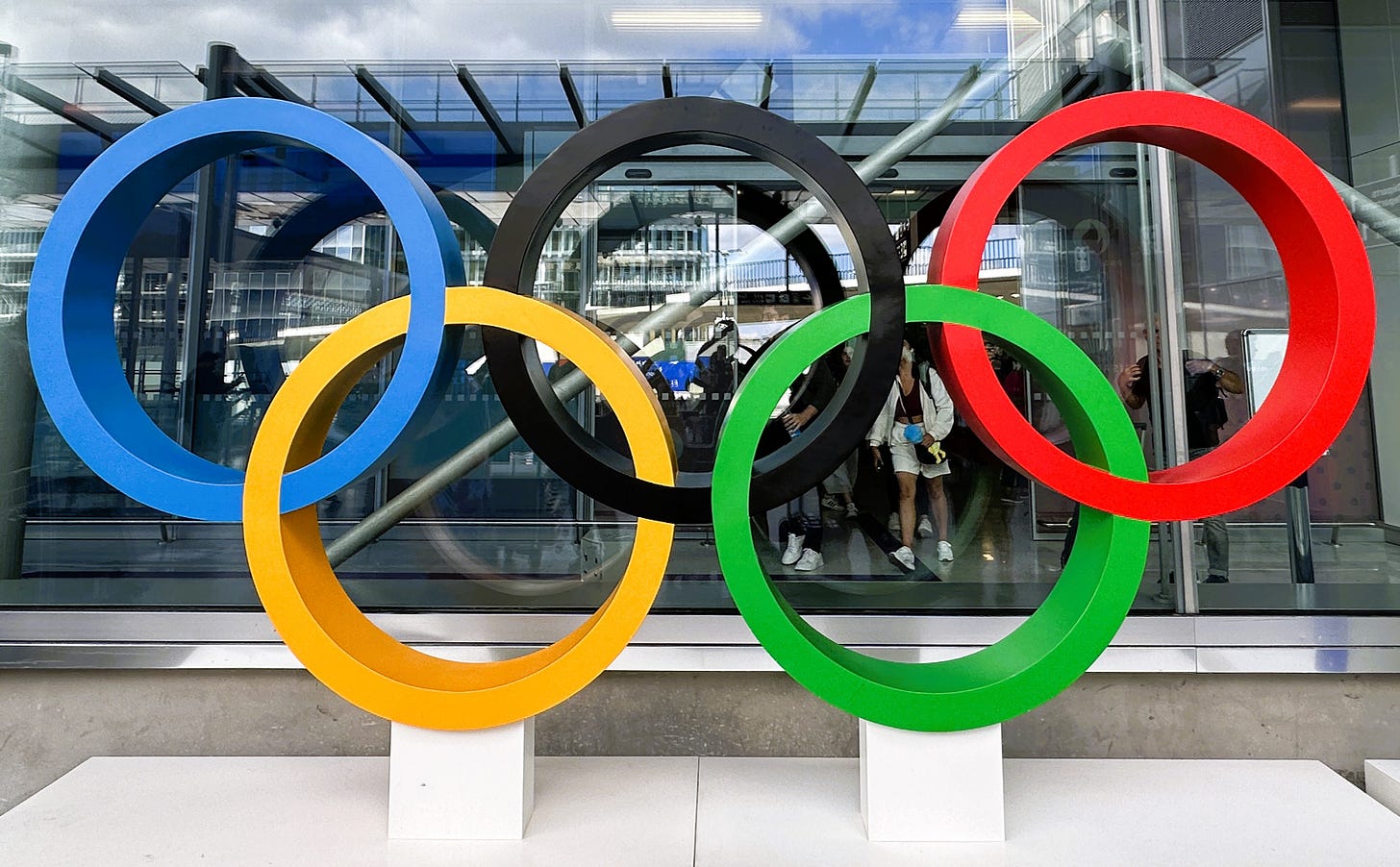
What does it take to host the world? Having the gang over for grub can seem like such a task that thinking through the minutiae required for safe, smooth and sentimentally sound sensations such as the Games implies Herculean planning and implementation. As the curtain draws on Paris 2024, I think of what cemented the idea for me to come. When it was held in my home city some years ago, I was on a volunteer medical mission in Afghanistan, so it seemed savvy to safeguard the chance to return to the land of lights, knowing that the Olympic action was the cherry atop a stunning city that would be even more scintillating in the summer heat.
My recently installed app tells me I’ve been to 25 countries in the past eight months. Some are repeats. What this implies is that given the quick succession and transitions, the flavour of my ingoing mood can be morphed by media and (well intentioned) others. Leading up to my flight, I heard tales of petty crime, advice to avoid the city’s main attractions and caution for the attitudes we’d encounter. Like I fanned together for FIFA in Qatar, I was delighted that I didn’t listen! When I arrived in Paris for the Olympics, I instantly felt the buzz.
Whether it was seeing the snapshot of Olympic Houses, spectating boxing or being among 80k other humans collectively watching and cheering on the multiplicity within athletics, this was a world event that was literally wonder-full.
At a cost of €4.38 billion, in an effort to “move boundaries” a mélange of French ambition, world-class engineers, analytical thinkers and creators of artistic beauty turned Paris into “a sumptuous, efficient stadium and its sometimes surly inhabitants into some of the kindest people on earth”.
The banners and branding with a heart, pastel pinks and niche blues surprised me. In today’s world where the symbolism of these colours tacitly implies roles and boundaries (now being challenged), I found it an interesting choice. It seemed to emphasize softness, perhaps to remind us of its importance and the spectrum of skills that were required when competitions reach this level of intensity. Continuing its lineage from the 1924 Games, the branding of Paris 2024 is audacious, disruptive and “just quintessentially French”. But believe it or not, “there was intense discussion of the color of the track at the Stade de France — was it purple, or pale purple, or pastel purple, or maybe violet, or even periwinkle blue? The jury is still out, but no athletes seem to have complained at this luminous French choice”.

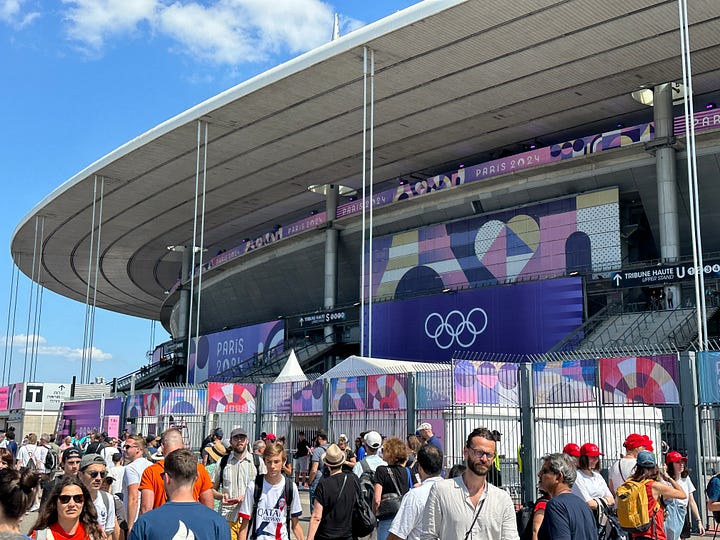
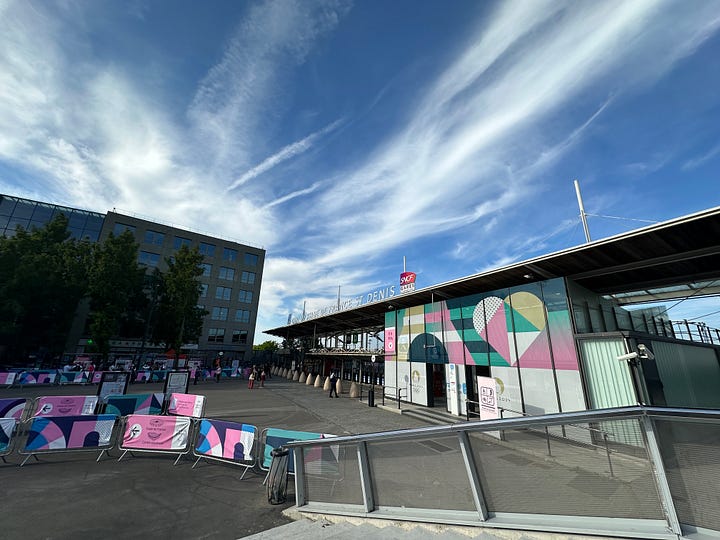
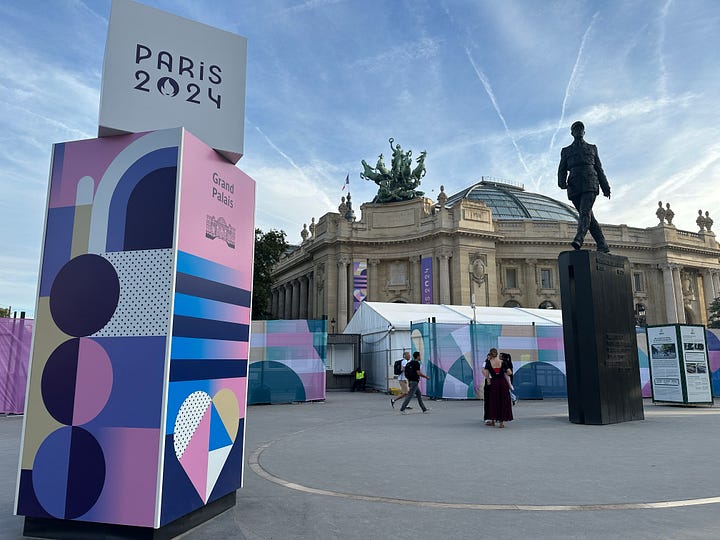
Obviously, this is a contest and celebration of elite performance. Therein too, I’d argue it’s a space to recognize other powers – mental wellness, emotional intelligence, rounded character, stand up sportsmanship and others. Perhaps this is also an invitation for the globe to honour when there’s a shattering of dreams, theirs or ours.
How much (intense) emotion can our hearts and beings hold? In moments that are overwhelming, how humans process complexity has been the focus for several studies and speculation. Like a conveyor belt that mechanically computes amorphous things into certain specifications, what do we do with the stuff that sits outside (expected or wanted) outcomes and parameters? Where and how does defeat, remorse, sorrow and sadness sit? Do we have the barometers that detect and digest this in a manner that is appropriate, timely and total? Like tantrums of toddlers or the brazenness of dogs that sniff a crotch the minute you meet them, do we deal with all this stuff in real time and if we did, I tried to imagine what a world this would be if we gave ourselves permission to recognize - and release …
Of course, not everyone will medal in the Olympics (or in life). Though I appreciate the proactive, creative and concrete ways in which an agenda like this can be widened to add value ongoing. Signs remind us of such efforts. At Orly airport planning for the Games included the use of 100% rainwater and that all car park and runway shuttles are now electric. Art installations spoke to programs initiated and continuing in vulnerable cities, of job creation and opportunities for minimizing environmental footprint. I was delighted that not many settings had AC and going by foot/metro was the obvious choice given the hassle to access cars in the city. Only those with certified logos could drive in lanes reserved for Olympics. It was clear this wasn’t their first rodeo.
Moreover, most metros ensured doable strolls to the stadium, likely so we wouldn’t be a bolus of bodies at once.
Incredulously, below a fast food burger ad a nudge for a healthy lifestyle was written in fine print. So delighted I was to see a public health announcement encouraging walking as a way to maintain ideal body weight (perhaps even capitalizing on the power of Olympic inspiration), while images of a cheese laden multi-patty burger flashed on the screen! It was apt that these saunters served the dual function to not only enable a natural dribbling into the venues, but also ensured that we got in more steps that day. They also seemed to strike a good balance between having sufficient service providers enroute to avoid bottle necks while ensuring little wastage of HR. Friendly and helpful volunteers were positioned at bifurcation points, enough on hand to quickly point a pink finger in the right direction.
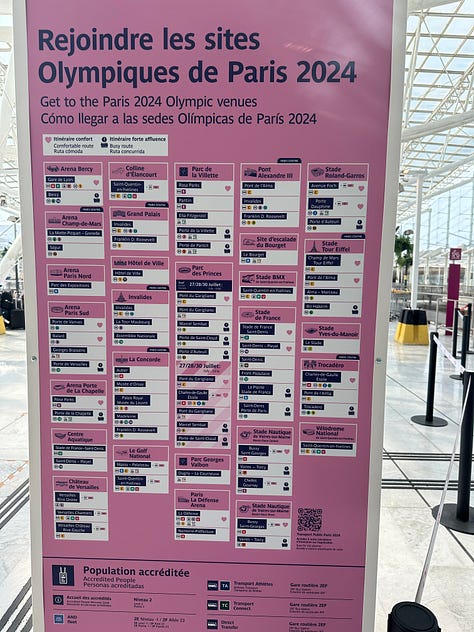

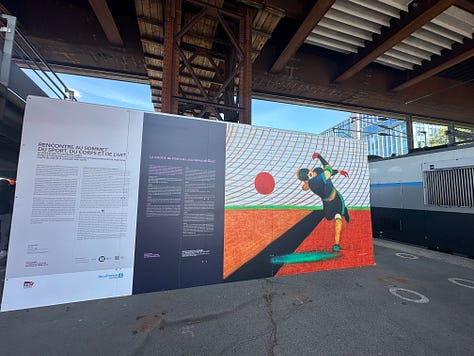
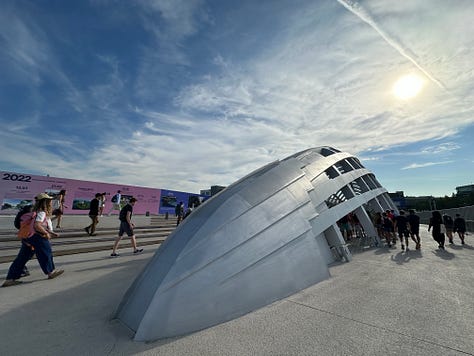
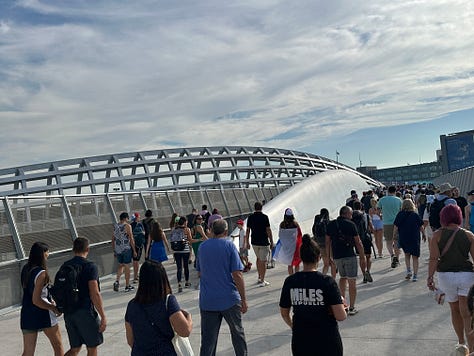
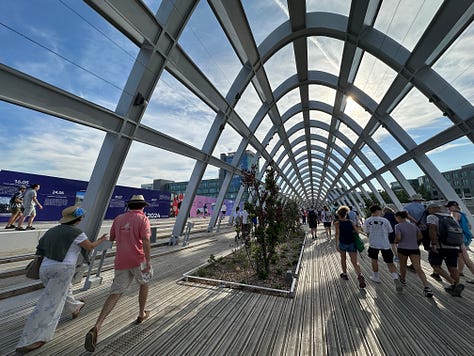
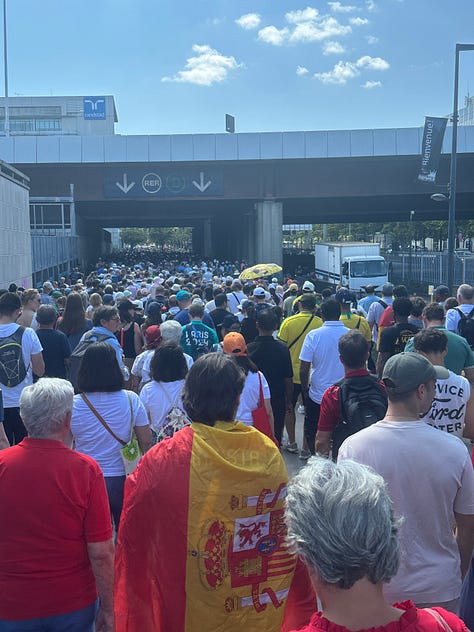
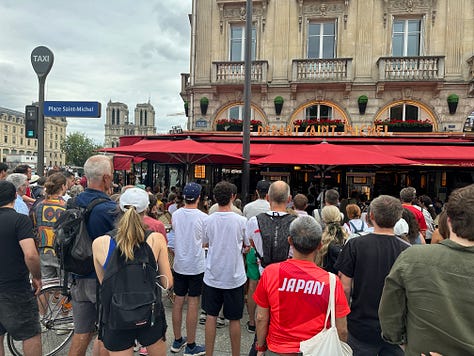
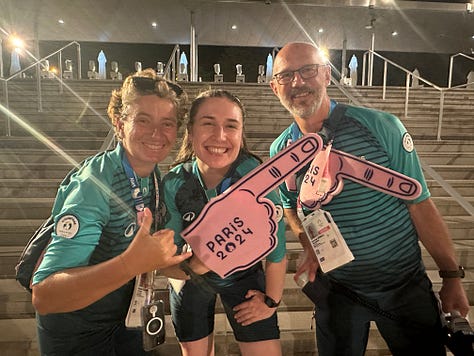
Packs of police every few hundred meters, along with the intermittent volunteer teams meant that you didn’t need to go too far to get directions, satiate your curiosities or snap a selfie. It seems like the capacity building of officers to help keep sports and streets safe paid off. Daily, between 30-45k officers were mobilized in Paris over the 16 days, yet their demeanor, placement and partnership with volunteers created a hosting community versus combative vibe.
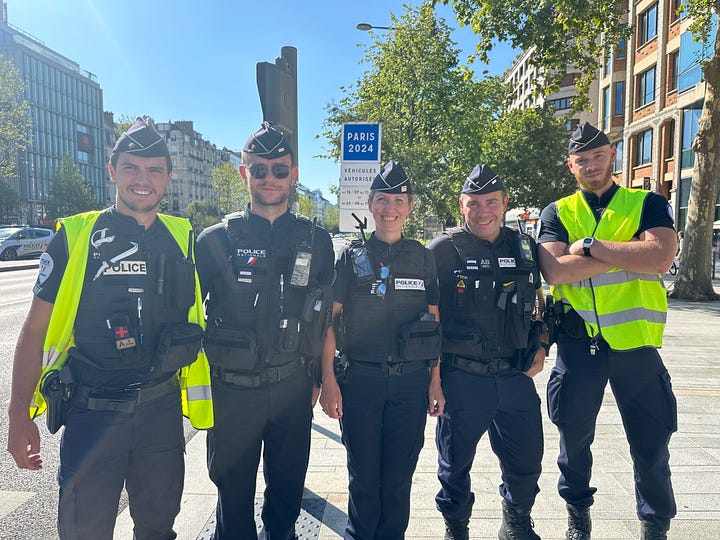
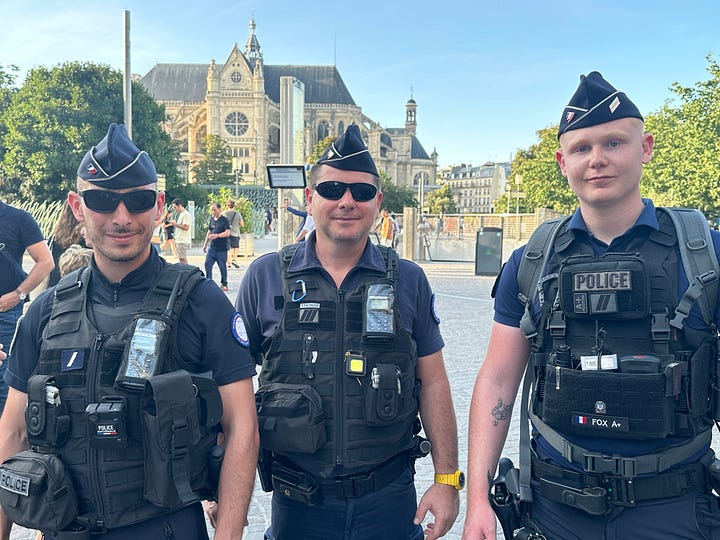
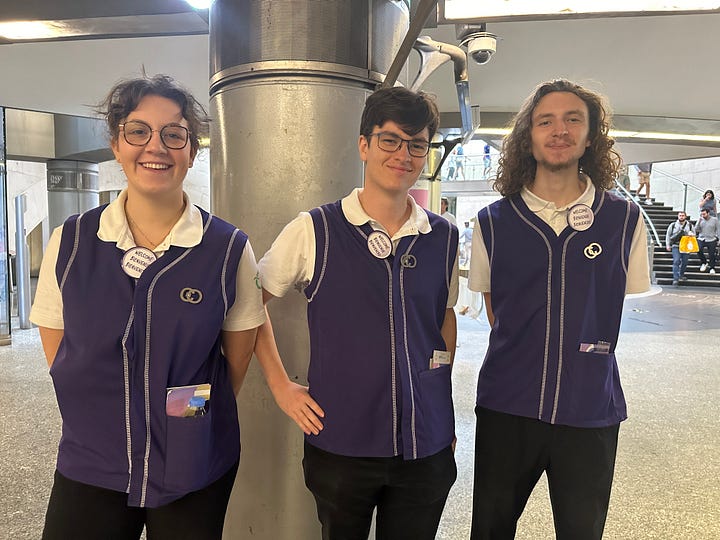
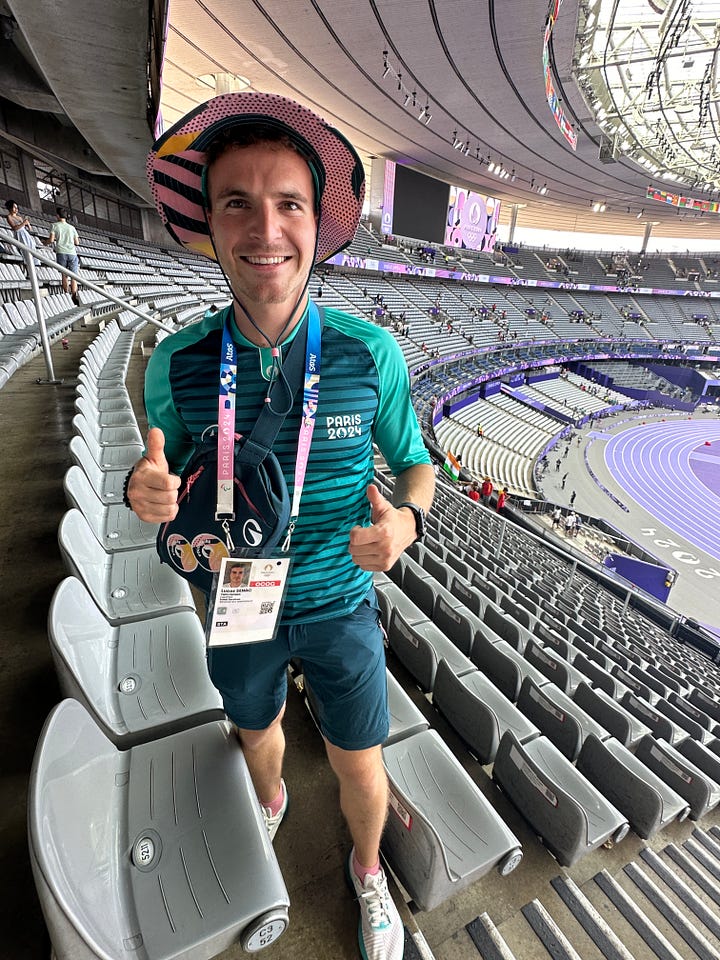
I loved the volunteer swag. Aquamarine Paris jersey shirts, cargo pants that can zip off into well fitting shorts, matching socks, shoes, summer hat, along with a fanny pack, duffle bag and probably other cool stuff was part of the volunteer gear bestowed on the 45k volunteers. The attire aimed to be ecofriendly, unisex and like Gattoni’s vibrant iconic posters (that took 2000 hours to create), represents both the Olympics and Paralympics. In addition to the torch, the mascot known as the Olympic Phryge represented both events. Perhaps recognizable more by shape than its name, the distinct red Phrygian caps have long served as a symbol for freedom throughout French history. Intentionality was clear: drawing upon its art, culture and architectural feats, Paris 2024 galvanized its geography and greatest assets.
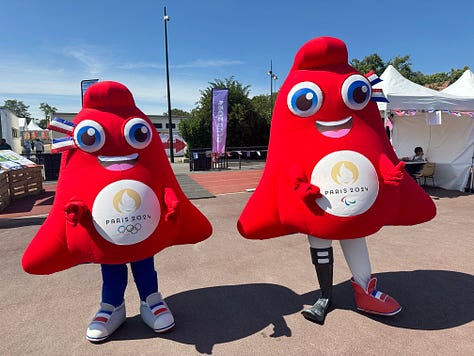
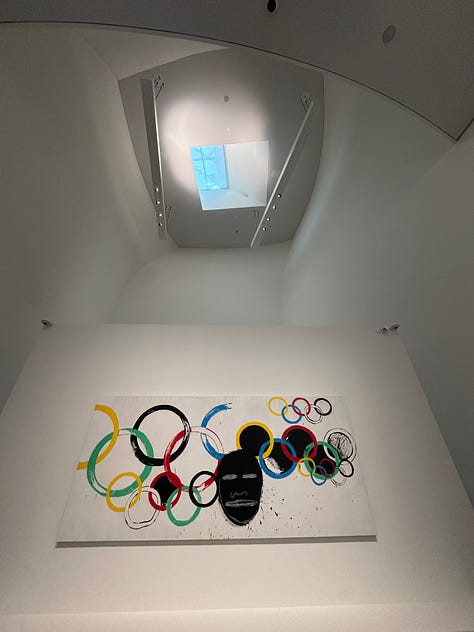
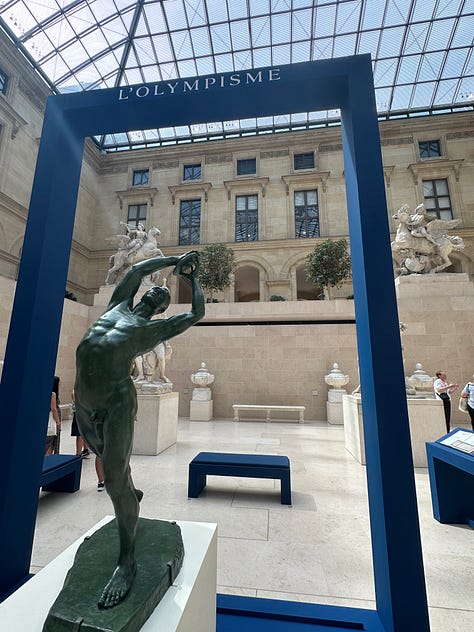
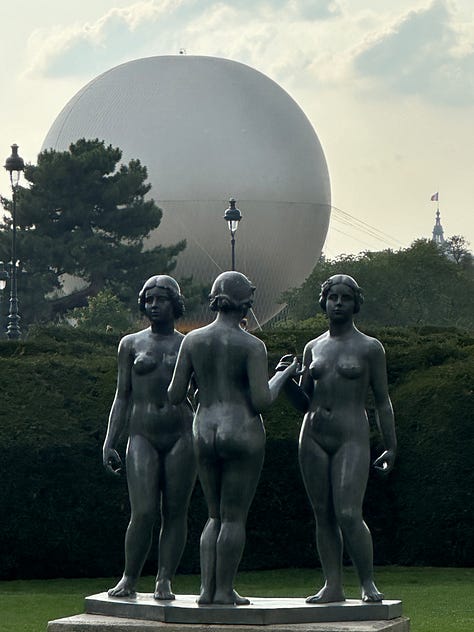
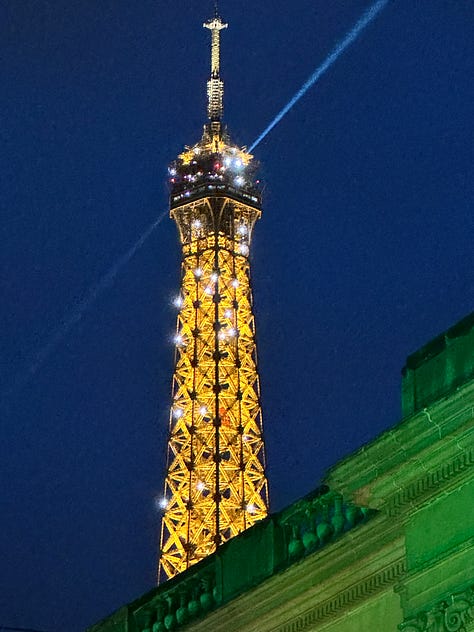
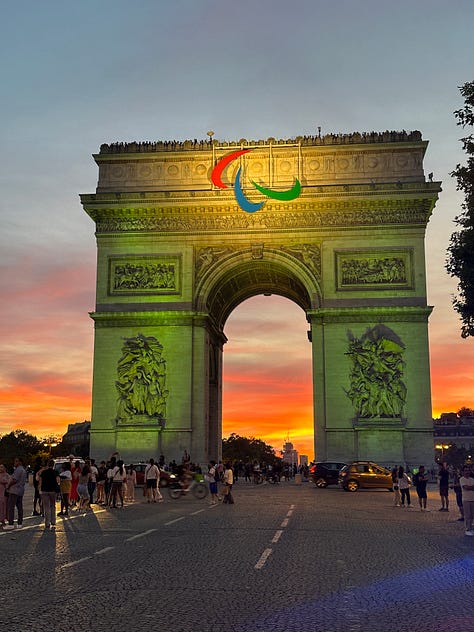
In spite their ongoing issues, most will agree there’s much too much beauty, creativity and inspiration to fully absorb over the course of several days and nights in France, especially during the Olympics.
As hosts, this place’s natural and organized charm was punctiliously on point, making it a privilege and sheer pleasure to be a part of.
May we be the kind of hosts that make people feel warmly welcomed, wonder-fully loved and wildly uplifted,




